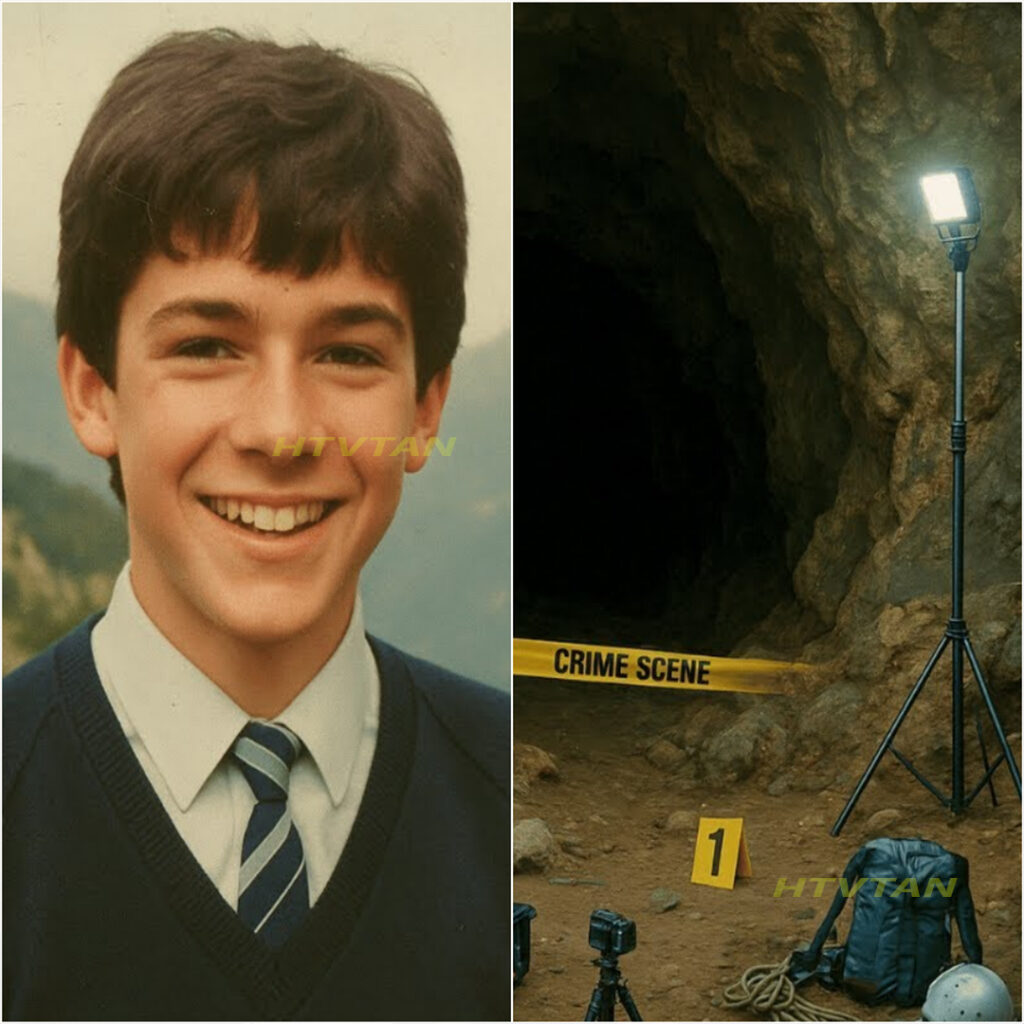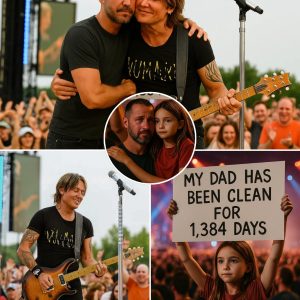On March 15, 1983, 32 seventh-grade students from San Miguel High School boarded the yellow bus that would take them to the mountains of Córdoba for their annual spring field trip. Among them was Miguel Hernández, a 13-year-old boy with an infectious smile and an insatiable curiosity about the nature around him. The trip had been planned for months. The students would visit the famous Onongamira Caves and hike in one of Argentina’s most beautiful landscapes.
For many of these children, it was their first chance to get away from the city and experience adventure in nature. Miguel had been especially excited about the trip. He had spent weeks preparing, reading about the region’s geology and carefully packing his backpack with a disposable camera, a sketchbook, and enough snacks to share with his classmates. His mother, Carmen Hernández, would later recall how her son had stayed up late the night before, checking his luggage over and over again.
The group was accompanied by three teachers: Mrs. Martinez, Professor Lopez, and Miss Garcia. They were also accompanied by a local guide named Carlos Mendoza, who knew the mountains like the back of his hand and had led hundreds of similar excursions without incident. The trip began without a hitch. The students sang songs on the bus, played games, and watched the landscape change from urban to rural as they headed toward the mountains. Miguel sat by the window, taking photographs of the scenery with his camera and writing observations in his notebook.
When they arrived at base camp near the Hongamira Caves around noon, the weather was perfect: clear skies, a pleasant temperature, and a gentle breeze promised an ideal day for exploring. No one could have imagined that before the sun had set, one of the most extensive searches in the history of Córdoba would have begun. The afternoon passed normally until 3:47 p.m., when Professor López conducted a routine headcount before heading off to the next scheduled activity.
Thirty-one students responded present. Miguel Hernandez was not among them. The teachers immediately began a search of the surrounding area, assuming Miguel had simply wandered off to explore or perhaps returned to the bus. However, after 30 minutes of searching without finding any sign of the boy, the situation changed from a minor concern to a full-blown emergency. Carlos Mendoza, the guide, knew every trail, every cave, and every corner of that area. He led the teachers in a systematic search while radioing local authorities.
Mrs. Martinez stayed with the other students, trying to remain calm while dealing with her own rising panic. The last to see Miguel were his classmates Ana Perez and Roberto Silva. They remembered seeing him photographing rock formations near the main trail around 3:15 p.m. According to their testimony, Miguel had mentioned wanting to get a better photo from a different angle, but no one had seen him move away from the group. At 4:30 p.m., the first rescue teams arrived from the nearest town.

By 6 p.m., the area was filled with police officers, volunteer firefighters, and residents from nearby communities who had joined the search. By 8 p.m., a makeshift command center had been established, and the search continued with flashlights and sniffer dogs. Miguel’s parents, Carmen and Eduardo Hernández, were notified and arrived on the scene around midnight. The image of Carmen crying while hugging Miguel’s backpack, which had been found near the trail, would become one of the most poignant photographs of the tragedy.
Over the next five days, the search for Miguel Hernández became the largest rescue operation the mountains of Córdoba had ever seen. More than 200 volunteers, including specialized mountain rescue teams, firefighters, police officers, and civilians, combed every square meter of a 50-kilometer area. Argentine Air Force helicopters circled the region using thermal imaging equipment to detect any sign of life. Specialized search and rescue dogs were brought in from Buenos Aires, following trails that invariably vanished into the rock formations near where Miguel had last been seen.
The national media covered the story intensively. A photograph of Miguel smiling in his last school photo appeared in newspapers across the country. Television stations broadcast live updates from the search site, and the Argentine public followed the story with diminishing hope. Caving experts explored every known cave in the region, including chambers that hadn’t been explored in decades. Specialized divers examined the few bodies of water in the area. Mountaineering teams checked out inaccessible cliffs and rock formations that a 13-year-old boy theoretically couldn’t have reached.
On the fifth day of searching, teams found Miguel’s disposable camera in a rocky crevice about 300 meters from the last confirmed sighting. The camera was damaged, but the photographs were developed. The final images showed rock formations that searchers could not definitively locate in the search area. As the days turned into weeks, the official search was gradually scaled back. Miguel’s parents refused to give up hope, hiring private investigators and organizing volunteer searches that continued sporadically for months.
However, no additional evidence was found. Miguel’s disappearance devastated the Hernandez family in ways that would change their lives forever. Carmen, who had worked as a nurse at the local hospital, quit her job to dedicate herself completely to the search for her son. Eduardo, an auto mechanic, continued working but devoted every free moment to organizing searches and following leads. The Hernandez home became a makeshift information center for the disappearance. The walls were covered with maps.
Photographs of the search area and copies of every police report. Carmen kept a detailed journal of every lead, every search, and every contact with authorities. Miguel’s younger sister, Sofia, was only 9 years old when her brother disappeared. The trauma of losing Miguel and seeing her parents immersed in an obsessive search profoundly affected her development. She became withdrawn, her school grades deteriorated, and she developed recurring nightmares about siblings lost in dark mountains. Miguel’s parents temporarily separated in 1985, unable to deal with their grief constructively.
Eduardo blamed the school for inadequate supervision, while Carmen blamed herself for allowing Miguel to go on the field trip. Tensions between them escalated when they began to have differing opinions about when and how to continue the search. However, their love for Miguel and their shared need to find answers eventually brought them together. They reconciled in 1987 and together established the Miguel Hernández Foundation, an organization dedicated to helping other families with missing children and promoting better safety protocols for school field trips.
The family never moved from their original home, keeping Miguel’s room exactly as he had left it. Carmen admitted years later that part of her hoped Miguel would return home one day and wanted everything to be just as he remembered it. As the years passed without answers, numerous theories began to circulate about what might have happened to Miguel Hernández. Some were based on limited physical evidence, others on speculation, and some on conspiracy and unsubstantiated rumors.
The official theory of the authorities was that Miguel had suffered an accident while exploring alone. He had possibly fallen into a hidden crevice or cave or slipped off a cliff into an inaccessible area. This explanation was supported by the area’s treacherous terrain and Miguel’s known tendency toward independent exploration. However, some private investigators hired by the family proposed alternative theories. One suggested that Miguel could have been the victim of a kidnapping, noting that no body had been found despite an exhaustive search.
This theory gained credibility when it was revealed that there had been several cases of missing children in mountainous regions of Argentina during the 1980s. One particularly disturbing theory suggested that Miguel could have been the victim of a child trafficking ring operating in rural areas. This theory was based on accounts of similar cases in South America, where children disappeared during outdoor activities and were never found. Paranormal enthusiasts proposed explanations involving supernatural phenomena or UFO sightings in the area during that period.
Although these theories were widely dismissed by authorities, they gained some traction in the alternative media and among paranormal research groups. One theory that persisted for years was that Miguel had voluntarily run away, possibly due to undisclosed family or school problems. However, this theory was consistently rejected by those who knew Miguel, including teachers, friends, and relatives who insisted he was a happy child with no reason to run away. Block Six. The Years of Silence. Between 1985 and 2010, the case of Miguel Hernández entered what investigators called the Years of Silence.
The media attention gradually faded, active searches ceased, and the case was officially filed as an unsolved disappearance. During this period, Carmen Hernández never stopped searching. Every few months, she and Eduardo returned to the mountains of Córdoba to conduct informal searches. They had memorized every trail, every rock formation, and every cave within an area several kilometers wide. They had become unofficial experts on the region’s topography. The family also followed every new lead that emerged.
When other children disappeared under similar circumstances in other parts of Argentina, the Hernández family would travel to offer support to the affected families and to see if there were any connections to Miguel’s case. These trips rarely produced new information, but they helped Carmen feel she was doing something constructive. Sofía Hernández grew during these years of silence, gradually overcoming some of her childhood traumas, but never completely free from the shadow of her missing brother. She became a social worker, specializing in cases involving at-risk children, a career clearly influenced by her family’s experience.
In 2008, provincial authorities officially reviewed the case as part of a broader initiative to solve cold cases using new technology. However, the review produced no new physical evidence. The only update was the creation of a DNA profile based on Miguel’s hair samples in case his body was eventually found. During these years, Eduardo developed a personal theory about what might have happened to Miguel. Based on his knowledge of the area and weather patterns, he believed Miguel had fallen into a crevasse that was subsequently sealed by a rockslide caused by heavy rains that occurred two days after the disappearance.
Bloque, the return of hope. In 2015, 32 years after Miguel’s disappearance, a group of amateur cavers was exploring a newly discovered cave system, approximately 5 km from the original search site. The system had been exposed by recent erosion caused by unusually heavy rains during the previous winter. The group, led by a geologist named Dr. Fernando Morales, was documenting the new formations when one of the explorers, María Gutiérrez, noticed something unusual in a deep chamber of the cave. Embedded in the mineralized sediment on the cave wall were what appeared to be remnants of synthetic fabric.
Initially, the group assumed the fabric was modern trash that had been washed into the cave by water. However, closer examination revealed that the fabric was highly mineralized, suggesting it had been in the cave for decades. The pattern and color of the fabric seemed consistent with clothing worn by children in the 1980s. Dr. Morales, who was familiar with Miguel Hernández’s case due to his work in the region, decided to contact the authorities.
Although he was skeptical about the connection, he felt the Hernandez family deserved to know about any possible evidence related to their missing son. Notification of the family was carefully handled by retired detective Roberto Vega, who had worked on the original case. Vega had maintained contact with the Hernandezes over the years and had developed a personal relationship with the family. When Carmen received Vega’s call, she initially felt the same surge of hope she had experienced dozens of times over the previous years when new leads emerged.
However, this time there was something different about Vega’s voice, suggesting that this lead might be significantly different from the previous ones. Block 8, the renewed investigation. The investigation of the fabric found in the cave became the first physical evidence potentially linked to Miguel Hernández in more than three decades. Provincial authorities, now equipped with forensic technology significantly more advanced than that available in 1983, began a full analysis of the sample. The textile analysis confirmed that the fabric was consistent with T-shirts manufactured in Argentina during the early 1980s.
The mineralization pattern suggested it had been in the cave environment for approximately 30 to 35 years. More significantly, DNA traces extracted from the cloth matched Miguel’s genetic profile, which had been created in 2008. This confirmation galvanized authorities to authorize a full exploration of the newly discovered cave system. A specialized team of forensic speleologists, archaeologists, and criminal investigators was assembled for an operation that would take several weeks. Carmen and Eduardo Hernández were informed of the findings and allowed to be present during critical stages of the exploration.
For Carmen, now 68, the moment represented the culmination of more than three decades of tireless searching. Exploration of the cave revealed a complex system that extended much deeper into the mountain than initially thought. Several chambers contained evidence of human and historical activity, including Indigenous pictographs dating back hundreds of years. In one particularly deep chamber, accessible only through a narrow passage requiring specialized equipment to navigate, researchers made a discovery that would finally provide answers about Miguel Hernández’s fate.
Block 9, the final discovery. In a chamber more than 40 m underground, connected to the cave system by a labyrinth of narrow tunnels, researchers found the skeletal remains of a child along with several personal objects that were identified as belonging to Miguel Hernández. The remains were in an area of the cave that would have been completely inaccessible in 1983 due to landslides that had blocked the access tunnels. Recent erosion had reopened these passages, allowing modern explorers to reach the chamber for the first time in decades.
Along with the remains, researchers found Miguel’s sketchbook, remarkably preserved by the cave’s dry conditions. The final pages contained cave drawings and a penciled note that simply read: “Lost, tried to come back. Mom, I love you. Also found were the remains of Miguel’s backpack, several snack wrappers, and a small flashlight that had apparently run out long ago. Evidence suggested Miguel had survived in the cave for several days before succumbing, likely to hypothermia and dehydration, and forensic reconstruction of the events.
suggested that Miguel had been exploring near the cave entrance when a small seismic tremor common in the area caused a cave-in that blocked his escape route. Instead of shouting for help, which might have alerted search teams, Miguel had attempted to find an alternative escape route deeper into the cave system. Analysis of the remains confirmed that Miguel had died of natural causes related to exposure and dehydration.
There was no evidence of physical trauma or third-party intervention. The tragedy had been an accident, exactly as authorities had originally theorized, but in a location that had been beyond the scope of the initial search. Block 10. The answers after 35 years. Confirmation of Miguel’s fate provided the Hernández family with the closure they had sought for more than three decades, but it also brought new, complex emotions of grief, relief, and guilt. Carmen later admitted that part of her had preferred the uncertainty to the finality of knowing her son was dead.
Miguel Hernández’s funeral in 2018 was attended by hundreds of people, including his original classmates who were now middle-aged adults with their own families. The community that had participated in the original search came together to provide final support to a family that had held out hope for 35 years. Sofía Hernández, now a 44-year-old social worker, spoke at the funeral about how her brother’s disappearance had defined her life and career.
He described decades of nightmares, therapy, and the gradual search for meaning in his family’s tragedy. Eduardo, who was 71 at the time of the funeral, expressed a mixture of relief and deep regret. “We finally know,” he told reporters. Miguel is home now, but we’ll never get back those 35 years we lost waiting. The final investigation also revealed flaws in the original 1983 search. The cave system where Miguel was found was marked on geological maps but hadn’t been fully explored during the initial search due to the belief that it was inaccessible to a 13-year-old.
Advances in search and rescue technology after 1983 could have located Miguel much earlier. Carmen established a scholarship in Miguel’s memory for students interested in geology and caving, hoping that continued scientific investigation of the area could prevent similar tragedies in the future. Block 11. The impact on the community. Miguel’s discovery after 35 years had a profound impact on the community that had participated in the original search. Many of the volunteers who had participated in the 1983 rescue efforts attended the funeral, some now in their 60s and 70s.
Carlos Mendoza, the original guide who had led the excursion, had died in 2010, but his son Pablo attended the funeral on behalf of his family. Pablo revealed that his father had never fully overcome the guilt he felt over Miguel’s loss and had continued exploring the area for years, hoping to find some evidence. The teachers who had supervised the original excursion also attended the funeral. Mrs. Martinez, now retired and 82, described how Miguel’s loss had affected her teaching career and how she had advocated for improved safety protocols for school field trips.
San Miguel High School established a permanent memorial for Miguel in 2018, including a plaque in the area where the seventh-grade students’ lockers had been. The school also implemented new safety protocols for field trips that included GPS technology and emergency communication. Dr. Fernando Morales, the caver whose team had found the first evidence, established an ongoing research program in the area to fully map all known cave systems. His goal was to create a comprehensive record that could prevent similar tragedies in the future.
Miguel’s story also led to changes in search and rescue protocols at the provincial level. Authorities recognized that future searches would need to include specialized caving exploration, even in areas that initially seemed inaccessible. Block 12. Lessons learned. Miguel Hernández’s case became an important case study for search and rescue professionals, psychologists working with families of missing persons, and educators responsible for student safety during outdoor activities.
Search and rescue protocols were updated to include mandatory caving exploration in areas with known or suspected cave systems. Modern technology, including drones equipped with thermal cameras and life-detection equipment, is now automatically deployed in searches for missing persons. Psychologists who studied the Hernandez family’s case identified important patterns in how families cope with long-term disappearances. The resulting research led to better support services for families in similar situations and improved protocols for maintaining hope while managing reality.
Schools across Argentina implemented new safety guidelines for field trips, including constant communication requirements, GPS tracking technology for students, and specific protocols for activities in areas with dangerous geological features. The story also highlighted the importance of persistence in missing persons cases. Miguel’s discovery after 35 years provided hope to other families with missing loved ones and demonstrated that technological advances can eventually solve even the oldest cases.
Criminal investigators noted that the case demonstrated the importance of maintaining open case files and revisiting cold cases with new technology. The DNA profile created in 2008 had been crucial in confirming Miguel’s identity when he was finally found. Block 13. Miguel’s Legacy: Years after Miguel’s discovery, his story continues to have a significant impact on multiple areas of Argentine society. The Miguel Hernández Foundation, established by his parents, has expanded to become a national organization assisting families with missing children.
Carmen Hernández, now 73, has become a nationally recognized advocate for improved search and rescue protocols. She has testified before the Argentine Congress on the need for improved resources for missing persons cases and helped establish national standards for searches in geologically complex areas. Miguel’s story has been documented in books, documentaries, and academic studies that examine both the technical aspects of the search and the psychological impact on families. These resources are used to train search and rescue professionals and counselors who work with affected families.
Sofía Hernández wrote a book about her experience growing up as the sister of a missing child. Living in the Shadows, A Sister Remembers, she became an important resource for families dealing with similar tragedies and for professionals who work with traumatized children. The site where Miguel was found has become a natural memorial, a discreet plaque marking the entrance to the cave system, and the area has been designated a Site of Special Geological Interest, requiring special permits to explore.
Dr. Morales and his team continue to map cave systems throughout the region, having identified dozens of previously unknown systems that could have posed similar hazards. Their work has led to better geological maps and an improved understanding of natural hazards in popular recreation areas. Block 14. Final Reflections. Miguel Hernández’s story represents more than the tragedy of a lost child. It symbolizes the resilience of familial love, the importance of never giving up hope, and the power of persistence in the face of uncertainty.
For 35 years, a family kept the memory of their lost son alive, refusing to accept that they would never know the truth. Carmen Hernández reflects on the decades-long search with a mixture of pain and pride. Miguel taught us that love doesn’t end with a disappearance. She says he taught us that a family can survive the unthinkable and that hope, even when it seems futile, can carry us through the darkest days. The case also highlights how technology and scientific knowledge are evolving to solve mysteries that once seemed insoluble.
Search methods in 1983 were limited compared to today’s capabilities, but steady progress in rescue technology and forensic analysis eventually provided the answers the family had sought for decades. For the broader community, Miguel’s story serves as a reminder of the fragility of life and the importance of cherishing every moment with our loved ones. It also demonstrates how tragedy can catalyze positive changes that protect others from similar experiences.
Eduardo Hernández, now 76, regularly spends time at Miguel’s memorial, not in grief, but in peaceful reflection. Miguel is home now, he says. And although it took us 35 years to find him, we finally know he is at peace. Miguel Hernández’s story continues to inspire researchers, educators, and families throughout Argentina and beyond. His legacy is not only the tragedy of his loss, but the demonstration that familial love can endure any trial and that the truth, no matter how long it takes to emerge, eventually finds its way to the light.
The search was over, but the impact of Miguel’s life and his family’s tireless dedication would continue to resonate for generations to come.





